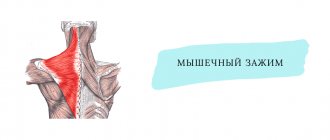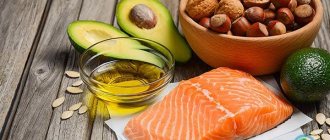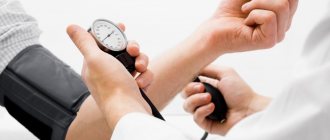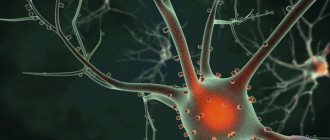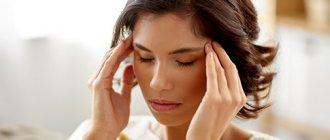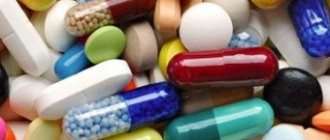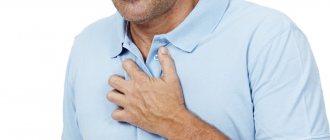There are several ways to deal with panic attacks. All of them can be divided into three types:
- Medicines;
- Psychological (psychotherapeutic) techniques and techniques;
- Other techniques typically used in specialized clinics (physiotherapy, biofeedback therapy, physical therapy, reflexology).
Below we will describe in detail the first group - medications for panic attacks.
.
Like any medicine, drugs for panic attacks must be prescribed by a clinic doctor, who, before prescribing them, clarifies the patient’s condition and determines all indications and contraindications!
All medications that help with panic attacks are divided into two groups:
- Quick aid equipment (“ambulance”). Can be used once. Allows you to prevent or relieve a panic attack.
- Medicines for continuous use (preventive). Taking these pills helps prevent the development of a panic attack.
Causes of vegetative-vascular dystonia
The main causes of vegetative-vascular dystonia include the following.
- Prolonged stress.
- Mental trauma.
- Physical overexertion.
- Bad habits (smoking, drinking alcohol).
- Negative environmental factors.
- Hereditary predisposition.
- Psycho-emotional overload.
- Sudden and significant changes in environmental conditions.
- Mental fatigue.
- Age-related hormonal changes.
- Severe intoxication.
In addition to the listed reasons that have a direct impact on the appearance of vegetative-vascular dystonia, there are a number of factors that themselves cannot cause VSD, but reveal a predisposition to it. The longer and stronger their exposure, the higher the likelihood of pathology occurring.
Violation of the vegetative functions of the body is promoted by:
- smoking;
- frequent and prolonged work at the computer;
- frequent abuse of alcoholic beverages;
- lack of sleep;
- uncontrolled medication use;
- frequent consumption of very spicy foods.
How does Afobazol work?
The drug is classified as a tranquilizer, but it should be noted that it stands out compared to its other counterparts.
Most members of this group act on benzodiazepine receptors. In this regard, there are some side effects of such drugs, such as: drowsiness, muscle atony, decreased concentration. Cases of addiction and withdrawal syndrome are common. But Afobazol acts very gently, bypassing all of the above complications. It has no effect on benzodiazepine receptors, acting directly on GABA-sensitive neurons and increasing their sensitivity.
GABA (gamma-aminobutyric acid) suppresses increased nervous excitability of the brain. This is the leading neurotransmitter that is responsible for inhibition processes in the central nervous system. It inhibits the action of acetylcholine and adrenaline, which cause emotional outbursts and pain. But at the same time, GABA activates the energy potential of brain tissue, stimulates blood circulation in it and the absorption of glucose and oxygen by cells, that is, it improves trophism or nutrition of the brain.
Afobazole reduces the activity of subcortical centers, such as the thalamus or hypothalamus, which are responsible for human emotions.
By taking Afobazole, you will protect your nervous system without falling into a stupor.
Treatment of vegetative-vascular dystonia
If treatment is started in a timely manner, the result in most cases will be positive. However, it may take several months. The duration of therapy directly depends on the form of vegetative-vascular dystonia and varies between 4–10 months. It is impossible to prescribe a universal remedy for VSD that will definitely help overcome the pathology.
The main role in the fight against vegetative-vascular dystonia is played by a healthy lifestyle, feasible physical activity and lack of stress. In addition, to achieve results, you need to give up smoking and drinking alcohol, normalize your work and rest schedule, adhere to proper nutrition, diversifying your diet with vegetables, fruits, nuts and dairy products.
What is prescribed for VSD? Treatment of vegetative-vascular dystonia is a whole range of measures, which may include the following:
- diet;
- taking medications;
- physical therapy;
- breathing exercises;
- acupuncture;
- massage;
- balneotherapy;
- phototherapy;
- psychotherapy;
- physiotherapeutic procedures (massage, breathing exercises, etc.).
There are a lot of drugs prescribed for VSD. Their choice depends on the symptoms of the pathology, the person’s health status, age and other factors. Therefore, only a doctor can tell you what to take for VSD. For each patient, the doctor develops an individual treatment regimen (based on the clinical picture), which may include the following groups of drugs:
- soothing herbal remedies;
- antidepressants;
- tranquilizers and anxiolytics;
- nootropics;
- vascular drugs;
- psychotropic drugs;
- adaptogens, etc.
Treatment of pathology
Treatment of vegetative-vascular dystonia of the hypertensive type is conservative; it is based on the comprehensive elimination of risk factors for the disease. The main goal of therapy is to organize complete rest, good sleep and the necessary amount of rest.
This set of therapeutic measures is carried out both through medication and other treatment methods, including traditional medicine, sanatorium-resort holidays, physiotherapy, massage and many other methods that are selected individually for each patient.
Drug treatment is carried out with the help of sedatives and antidepressants, as well as drugs that help eliminate chronic diseases.
It is important to note that pharmaceutical products are prescribed only if conventional methods are powerless. Their main focus is eliminating the symptomatic picture.
- Beta blockers are prescribed if tachycardia is present.
- For hypertension, hypotonic drugs are prescribed to help lower and normalize blood pressure levels.
- "Detralex" or "Venoplant" are prescribed for severe headaches or a feeling of heaviness in the head.
- "Cavinton", "Nitserium" help eliminate dizziness during an exacerbation.
- "Betaserk" helps eliminate extraneous noise in the head.
- Antidepressants are prescribed in cases of increased nervousness and irritability. The course of treatment with these drugs should be short-term to prevent the body from becoming addicted.
- In the presence of rapid fatigue and increased weakness, antioxidants or neuroprotectors are prescribed.
- As a sedative, medications based on natural ingredients are taken: valerian, lemon balm, motherwort.
Also, during the treatment period, it is necessary to maximize immunity for the body’s ability to independently fight the disease. For this, the patient is prescribed vitamins C and B, zinc and selenium.
Taking the above medications as self-medication is strictly prohibited. The course must be prescribed by a qualified physician, and the direction of treatment itself must differ, depending on individual predispositions.
Initial treatment includes the basic rules of a healthy lifestyle, following which you can not only cure the disease, but also prevent this clinical syndrome.
Such measures help calm the nervous system, reduce anxiety, and stabilize the functioning of the cardiac and vascular systems. Most often, they are sufficient if you treat vegetative-vascular dystonia without drug intervention.
Drug elimination of symptoms of vegetative-vascular dystonia
Symptomatic treatment is aimed at eliminating the manifestations of vegetative-vascular dystonia.
- For rapid heartbeat and periodic surges in blood pressure, beta-blockers are indicated.
- For VSD and panic attacks, taking tranquilizers is indicated.
- Heart pain can be relieved with sedatives. For bradycardia (heart rate less than 50 beats per minute), it is recommended to take a drug that stimulates heart contractions.
- Vasodilators are also necessary for VSD. ACE inhibitors have this effect.
- If pain (in the abdomen, joints, muscles, heart) due to VSD cannot be relieved, doctors may prescribe tricyclic or serotonergic antidepressants. Typically, a short course of taking these drugs quickly relieves pain.
- With the hypertensive type of vegetative-vascular dystonia, agents for the blood vessels of the brain are needed that improve blood circulation. These drugs will relieve dizziness due to VSD caused by high blood pressure.
- If constipation appears against the background of VSD, then you should not only adjust your diet, where fiber-rich foods will predominate, but also, if necessary, take laxatives recommended by your doctor.
- If the patient has a tendency to diarrhea, he, on the contrary, needs to limit the consumption of foods containing fiber and take fixatives as necessary. Also in this case, sorbents can be used.
- To eliminate signs of venous insufficiency, venotonic drugs may be prescribed. In addition, such tablets help with headaches due to VSD and eliminate tinnitus.
- For headaches due to low blood pressure, it is recommended to take tonics.
Thus, along with the treatment of the underlying pathology, a fairly wide range of tablets for VSD are used to eliminate the unpleasant symptoms of vegetative-vascular dystonia.
Medications to take regularly for panic attacks
Constant use of pharmacotherapy allows you to stabilize the biochemical and physiological processes in the nervous system that are responsible for the development of panic attacks.
Basically, such drugs act on specific receptors in the brain and restore the normal activity of neurotransmitters: dopamine, serotonin, norepinephrine, adrenaline, acetylcholine and others.
Antidepressants
Mainly affects serotonin receptors of the nervous system. They are used in courses of several months (from three to more than a year). The most “popular” and common antidepressants for preventing panic attacks:
- Escitalopram (cipralex, elicea);
- Paroxetine (Paxil);
- Amitriptyline;
- Sertraline (Zoloft);
- Fluvoxamine (fevarin).
Neuroleptics
They act predominantly on dopamine receptors in the brain. Prescribed in cases where panic attacks are a manifestation of an endogenous disease. Like antidepressants, they are taken for a long time from several months to several years.
Contrary to popular belief among people with anxiety disorders, they do not cause addiction. The most commonly used antipsychotics for long-term treatment of panic attacks are:
- Thioridazine (Sonapax);
- Sulpiride (eglonil);
- Quetiapine (Seroquel);
- Risperidone (rispolept);
- Flupenthixol (fluanxol).
Normotimic drugs
Their mechanism of action is the normalization of the ratio of excitation and inhibition processes in the brain. Most effective for panic attacks due to encephalopathy, consequences of traumatic brain injuries, strokes, and hypoxia.
The most common representatives of normotimics:
- valproic acid (Depakine Chrono),
- lamotrigine (Lamictal),
- carbamazepine (finlepsin).
To summarize, it can be noted that among the above-listed medications there are several drugs with a universal effect: they are suitable both for a single dose to quickly relieve a panic attack, and for long-term use. These are the antidepressant amitriptyline and the antipsychotics quetiapine, thioridazine and sulpiride.
This material is for informational purposes only. Under no circumstances should you use the medications described above for panic attacks on your own. Any use of the drug should only be as prescribed by a doctor! Don't self-medicate!
Eltacin® in the treatment of VSD
Therapy for VSD should be aimed at eliminating its cause, and not masking the symptoms. This is precisely why Eltacin® was developed. It contains 3 amino acids: cystine, glycine and glutamic acid. Their combination promotes the production of glutathione in the body - one of the powerful and natural antioxidants in the body, which neutralizes the effects of free radicals, prolongs the life of cells and prevents their death, normalizes the supply of oxygen to tissues and individual cells and helps enzymes maintain their functions. Thanks to this, the drug allows you to eliminate the symptoms of VSD, as well as influence the root of the problem and restore the balance between organs and systems, disturbed by the negative effects of free radicals.
Eltacin®:
- is the strongest endogenous antioxidant;
- sold at an affordable price.
- dispensed without a doctor's prescription;
Associated symptoms
High blood pressure in vegetative-vascular dystonia is the main symptom of the disease. To distinguish VSD from hypertension, it is enough to know what helps restore blood pressure levels. In case of vegetative-vascular failure, the pressure decreases not after taking blood pressure-lowering medications, but after sedatives or rest or sleep. There are also other symptoms of VSD of the hypertensive type.
Other symptoms are:
These signs indicate the presence of the disease. Therefore, at the first manifestations, you should seek help from a qualified physician who can accurately diagnose the disease and prescribe a rational method of treatment.

